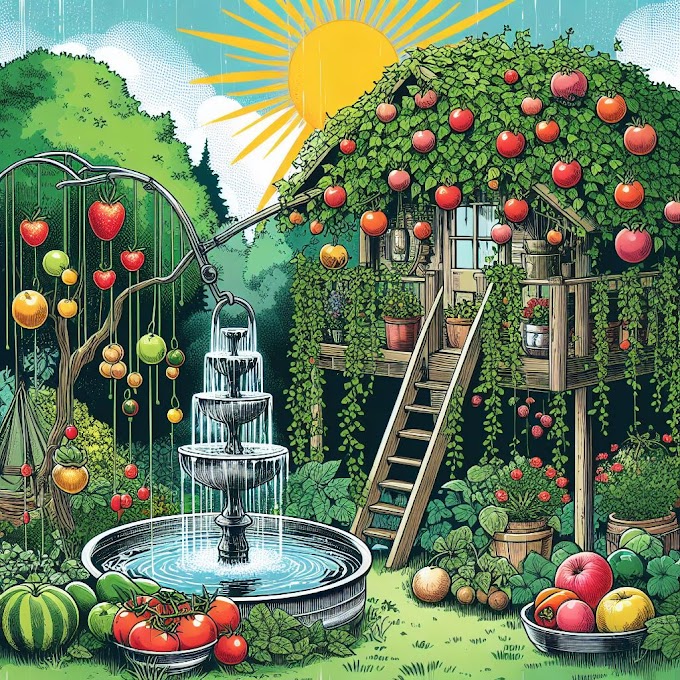How To Grow Sunflowers In Your Garden
Sunflowers, with their vibrant blooms and towering stems, are not just a symbol of sunshine but a statement of nature's grandeur.
Growing sunflowers in your garden is a rewarding experience that brings joy and beauty to your outdoor space.
Here's a simple guide on how to cultivate these majestic flowers and witness the sunny spectacle they bring.

1. Choosing the Right Sunflower Variety:
- Dwarf Varieties: Opt for dwarf sunflower varieties for smaller spaces or container gardening. Examples include 'Sunflower Music Box' or 'Sunflower Elf.'
- Giant Varieties: If space allows, consider giant sunflower varieties known for their impressive height. 'Russian Giant' and 'Mammoth' are popular choices.
2. Selecting the Planting Site:
- Sun Exposure: Sunflowers thrive in full sun. Choose a location with at least 6-8 hours of direct sunlight per day.
- Well-Drained Soil: Plant sunflowers in well-drained soil. They are adaptable but prefer soil with good drainage.
3. Planting Sunflower Seeds:
- Timing: Plant sunflower seeds directly in the garden after the last frost date in spring. They can also be started indoors 2-4 weeks before transplanting.
- Soil Temperature: Ensure the soil temperature is around 50°F (10°C) for optimal germination.
- Planting Depth: Sow seeds about 1-2 inches deep and space them according to the specific variety's recommendations.
4. Watering Sunflowers:
- Consistent Moisture: Keep the soil consistently moist during the germination and early growth stages.
- Deep Watering: Once established, water deeply when the soil is dry to encourage deep root growth.
5. Fertilizing Sunflowers:
- Initial Feeding: Incorporate organic matter into the soil before planting. A balanced, all-purpose fertilizer can be applied during planting.
- Mid-Season Boost: Side-dress sunflowers with a balanced fertilizer during mid-season to support their growth and blooming.
6. Supporting Tall Sunflowers:
- Staking: Tall varieties may benefit from staking to provide support against strong winds.
- Natural Supports: Plant sunflowers in clusters to provide natural support to each other.
7. Pruning and Deadheading:
- Pruning Side Shoots: Pinch off side shoots that may form in the leaf axils to direct energy to the main stem.
- Deadheading: Remove spent blooms to encourage continuous flowering and prevent seed formation if growing for cut flowers.
8. Harvesting Sunflower Seeds:
- Timing: Harvest sunflower seeds when the flower heads have fully matured, and the back of the heads turn yellow or brown.
- Drying Seeds: Cut the flower heads with a portion of the stem attached and hang them upside down in a cool, dry place to dry.
- Extracting Seeds: Once dried, rub or shake the flower heads to release the seeds. Store seeds in a dry, airtight container.
9. Pest and Disease Management:
- Vigilance: Regularly inspect sunflowers for pests like aphids or sunflower beetles.
- Natural Remedies: Consider natural remedies such as releasing ladybugs or using neem oil for pest control.
10. Companion Planting with Sunflowers:
- Beneficial Plants: Plant companion plants like nasturtiums, marigolds, or cosmos, which may deter pests and complement the sunflowers aesthetically.
11. Educational Element:
- Children's Gardens: Sunflowers are perfect for children's gardens. Involve them in the planting process and teach them about the life cycle of these cheerful flowers.
- Educational Labels: Consider adding informative labels or signs explaining the significance and life cycle of sunflowers for visitors or curious onlookers.
Growing sunflowers is a joyful journey that rewards you with stunning blooms and if desired, a harvest of nutritious seeds.
By providing the right conditions, proper care, and a touch of creativity, you'll cultivate a garden that radiates the warmth and beauty of these magnificent flowers.
May your sunflower garden be a beacon of sunshine in your outdoor sanctuary. Happy growing!












